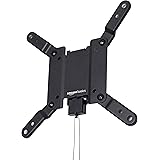The 65+ Wave Is Crashing—And The Housing Market Isn’t Ready for the Gold Rush of Aging Americans.
Have you ever stopped to think about what happens when a tidal wave meets a crumbling levee? Well, in America, that’s exactly the picture unfolding with our aging population and senior housing market. Every single day, over 10,000 people celebrate their 65th birthday—and while that’s impressive on its own, the real swell is the 28% jump in Americans aged 80 and over coming in just five years. They call it the “Silver Tsunami,” and trust me, it’s no gentle ripple. Here’s the kicker: senior housing construction is at a near standstill, the lowest since 2014. Millions will need assisted living or memory care, but the beds just aren’t there. Nearly 88% of seniors face chronic conditions requiring more than a loving family can offer, turning professional care from a luxury to a necessity. So, what if your own parents needed care tomorrow? Would there be room? Waiting lists stretching for months, skyrocketing costs, and shrinking options are rapidly becoming the new normal. It’s a ticking time bomb that savvy investors simply can’t ignore. The question isn’t if you should act—it’s how soon can you get ahead of this unstoppable demographic wave before it washes over the market? LEARN MORE
Every day in America, more than 10,000 people reach the age of 65. That’s a staggering number by itself, but the real tidal wave is still ahead. The population of Americans aged 80 and above is set to grow by 28% in the next five years. Demographers call it the “Silver Tsunami.”
With this surge comes a problem: Senior housing construction is at its lowest level since 2014. Millions of Americans will soon need assisted living, memory care, or modern independent communities. That mismatch isn’t just concerning; it’s a looming disaster.
Plus, nearly 88% of Americans over 65 live with at least one chronic condition, meaning a majority of seniors require some level of ongoing support beyond what traditional family caregiving can provide. Smaller household sizes and dispersed families only amplify the pressure. For many, professional senior living communities aren’t a luxury; they’re the only option.
What if your retirement-aged parents needed senior living care tomorrow. Would there be a place available? What do you do if the answer is no? What if the waiting lists stretch months, or even years, as demand overwhelms supply?
That’s not just a distant possibility; it’s the exact trajectory we’re on right now. As demand continues to soar while supply decreases, we will see skyrocketing costs and families facing fewer affordable options for their loved ones. This is the backdrop every smart investor needs to recognize before it’s too late. Acting sooner means positioning yourself ahead of the demographic surge rather than scrambling once the crisis peaks.
A Housing Market on the Brink
If demographics are the wave, then housing supply is the fragile levee holding it back. And right now, that levee is cracking.
New construction for senior housing is at record lows, just 0.8% of existing inventory. To put that in perspective, experts project the U.S. will need at least 600,000 new units by 2030, but current development rates will only deliver a fraction of that. The math simply doesn’t work.
Worse still, the facilities we already have are showing their age. More than 40% of existing senior living properties are over 25 years old. Many were built for a different generation, with outdated layouts, limited technology, and insufficient amenities to meet the expectations of today’s retirees. This isn’t just an issue of comfort—it directly impacts occupancy, rents, and long-term viability.
For families, this looming shortfall translates into wait lists, rising costs, and tough choices about where loved ones will live. For investors, the implications are equally stark: Those who wait may find themselves paying higher entry prices, competing for fewer quality assets, and missing the window to capture the strongest returns.
Why Senior Living Is a Recession-Resilient Asset
When markets wobble, needs-based housing doesn’t. Senior living isn’t a lifestyle upgrade; it’s care. That distinction matters when you’re trying to protect capital through cycles.
Demand doesn’t turn off in a downturn. Care needs to persist regardless of GDP or headlines. As the 80-plus cohort expands rapidly over the next five years, this baseline demand only intensifies.
Real-time performance is already validating the thesis. Leading operators and REITs have reported double-digit same-store NOI growth (for example, 13.6% YoY in one major SHOP portfolio, with 16% in the U.S.), proof that occupancy and pricing power are strengthening now, not “someday.”
Supply scarcity boosts pricing power even further. With new construction at record lows (?0.8% of inventory), communities face less competitive pressure while demand rises. Replacement costs have jumped 40% to 60% since 2020, creating a basis advantage for existing assets and renovated properties.
In plain terms: fewer new beds + higher replacement costs = more leverage for well-run communities.
Institutional capital is lining up. Large, data-driven platforms are scaling, improving operations, and compressing timelines from evaluation to close, fueling a maturing exit environment for owners and investors.
What should worry investors is not the cycle; it’s the clock. If you wait until the surge is obvious to everyone, you risk entering after pricing has already moved. Acting earlier is about prudence, not greed. You’re positioning capital where care needs are inevitable and modernization is necessary.
Meet Worthy Wealth
The senior living market is shaping up to be one of the most urgent and unavoidable investment stories of our time. But urgency without a clear path forward only creates anxiety.
This is where Worthy Wealth enters the picture, with a strategy designed to not just weather the Silver Tsunami, but to capitalize on it responsibly.
Worthy Wealth Senior Living Shares target undervalued and underperforming facilities across the U.S., acquiring them at favorable entry points and modernizing them to meet today’s standards. These upgrades aren’t cosmetic; they address outdated layouts, improve care capabilities, optimize staff, and add the technology and amenities seniors and their families increasingly demand.
In short, Worthy Wealth isn’t chasing luxury towers. It’s breathing new life into communities that desperately need it.
For investors, the model is refreshingly accessible. Shares are just $10 each, with a minimum investment of only $100. That means you don’t need to be a high-net-worth insider to participate in this generational opportunity. Capital is pooled, deployed into carefully selected properties, and managed by experienced operators and partners.
The return structure is equally compelling. Investors receive quarterly dividends, 5% annually for years one through three, increasing to 7% thereafter. When properties are sold, investors also share in the upside through a 60% profit split, in addition to receiving their initial capital back. All told, the strategy targets a 15% annualized net return over a five-year term.
The significance here is twofold. First, investors are positioned to earn strong returns in a sector with demographics as a tailwind. Second, they’re doing so in a way that helps modernize and expand the very infrastructure families will depend on in the coming decade.
This is not just an investment, it’s a way to be on the right side of history, turning a looming crisis into a sustainable solution.
The Only Rational Defense Against the Coming Crisis
A tidal wave of demand is colliding with a brittle, undersupplied housing stock. The rational response isn’t to wait until the crisis is in full view. It’s to position now, while favorable entry points still exist.
That’s what makes Worthy Wealth Senior Living Shares more than just another investment product. They are a timely, structured defense against the demographic surge already reshaping America.
Consider the alternatives: Traditional real estate faces cyclical headwinds and equities swing wildly with every headline. Senior living, however, is driven by needs-based demand, and the backlog of supply guarantees that the imbalance will only worsen. This is one of the few places where demographics themselves paint a pretty clear picture.
Worthy Wealth Senior Living Shares provide a straightforward way to get ahead: minimums as low as $100, quarterly dividends, and a target 15% annualized return. With Worthy Wealth, investors aren’t simply seeking returns. They’re funding the modernization of aging communities, directly addressing a national emergency while building durable wealth.
Scarcity rewards those who prepare early, and Worthy Wealth offers a structured, accessible path to do exactly that, before the crisis peaks.

















Post Comment